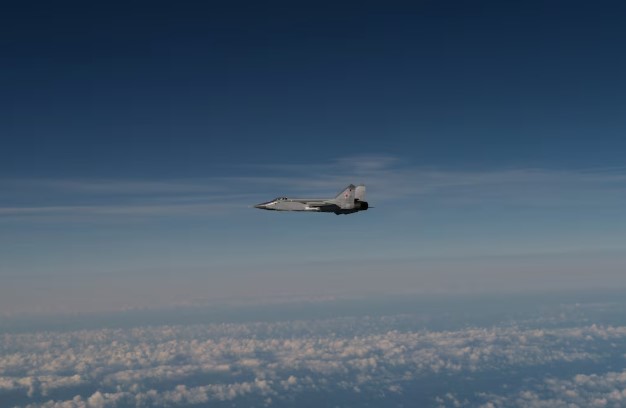This month, Russian military aircraft and drones have repeatedly crossed NATO airspace, entering Poland, Romania, and Estonia. These repeated actions have been classified as enemy activity, raising alarm across the alliance. NATO officials emphasize that any violation of NATO airspace is a serious threat to the security of member states.
Repeated Russian Air Intrusions Alarm NATO Airspace
When a member-state feels its territorial integrity or political independence is threatened, NATO can activate Article IV consultations. These consultations have already taken place this month, signaling the seriousness of Russia’s repeated violations of NATO airspace. If such intrusions continue, NATO could escalate the situation to Article V, which requires a collective military response. This principle is a core part of NATO’s founding idea: “an attack on one is an attack on all.”
The repeated crossings suggest that Russia is testing NATO’s readiness and response systems. NATO’s air policing operations already monitor over 30,000 air movements daily across NATO airspace, ensuring that intrusions are detected quickly.
Putin moves Russian jets into Estonian airspace raising NATO concerns over repeated violations
Radar installations along borders track aircraft that are not in contact with civilian air controllers, including drones and military planes. Quick-reaction fighters can launch within minutes from Combined Air Operations Centers in Germany and Spain. Intruding aircraft are intercepted and escorted out of NATO airspace, as recently happened over Estonia.
NATO Airspace Preparedness and Response Options
NATO has significant capabilities to respond to incursions into NATO airspace. One key measure is maintaining 24/7 air coverage over the eastern flank using airborne early warning aircraft, such as US-made E-3 AWACS. These aircraft provide a top-down view of NATO airspace, detecting low-flying drones or fighters that ground-based radars might miss.
The alliance can also increase the number of fighters ready for quick-reaction launches. Advanced F-35 Lightning jets, used by several NATO members, provide a powerful air advantage. Other capable fighters include Swedish Gripens, Eurofighter Typhoons, and American-made F-15 Strike Eagles and F-18 Hornets. NATO has more than 3,000 fighters available, roughly four times the Russian inventory, enabling continuous combat patrols over NATO airspace.
Crypto mining scam worth $577 million ends with prison for Estonian duo
Additionally, NATO has been analyzing tactics used by Ukraine to counter Russian drones. These measures include physical barriers, unmanned aircraft for counter-drone operations, directed-energy weapons, and electronic jamming using EA-18G Growlers and EC-37B Compass Calls. Cyber tools can also disrupt drone operations, adding another layer of defense for NATO airspace.
Strengthening Deterrence Against Russian Aggression
The key to NATO’s strategy is making it clear to Russia that violations of NATO airspace will have serious consequences. Simply escorting Russian aircraft out of the airspace has proven ineffective in changing behavior. NATO is considering tightening rules of engagement, reserving the right to shoot down drones or crewed aircraft that violate borders.
Poland has already warned that it could shoot down any unauthorized Russian aircraft entering its airspace. NATO’s combined radar networks, early-warning systems, and rapid-reaction forces actively create a robust shield over airspace. These systems detect and respond to intrusions efficiently, ensuring that member states remain safe and their territorial integrity stays intact.
Trump backs NATO defense of Poland and Baltic states as Russia airspace incursions increase
The military command structure within NATO actively manages such operations. Allied Air Command, based in Germany, coordinates air and space power, operates missile-defense systems, and oversees combat operations across Europe. Experienced commanders actively plan and execute operations, combining intelligence, cyber capabilities, and advanced fighter aircraft to maintain security over airspace.
By maintaining high readiness, operating advanced early-warning systems, and enforcing clear deterrence policies, NATO actively positions itself to respond efficiently to any further Russian air incursions. Continued vigilance and strong defensive measures in airspace are essential to prevent repeated violations and safeguard alliance members.
